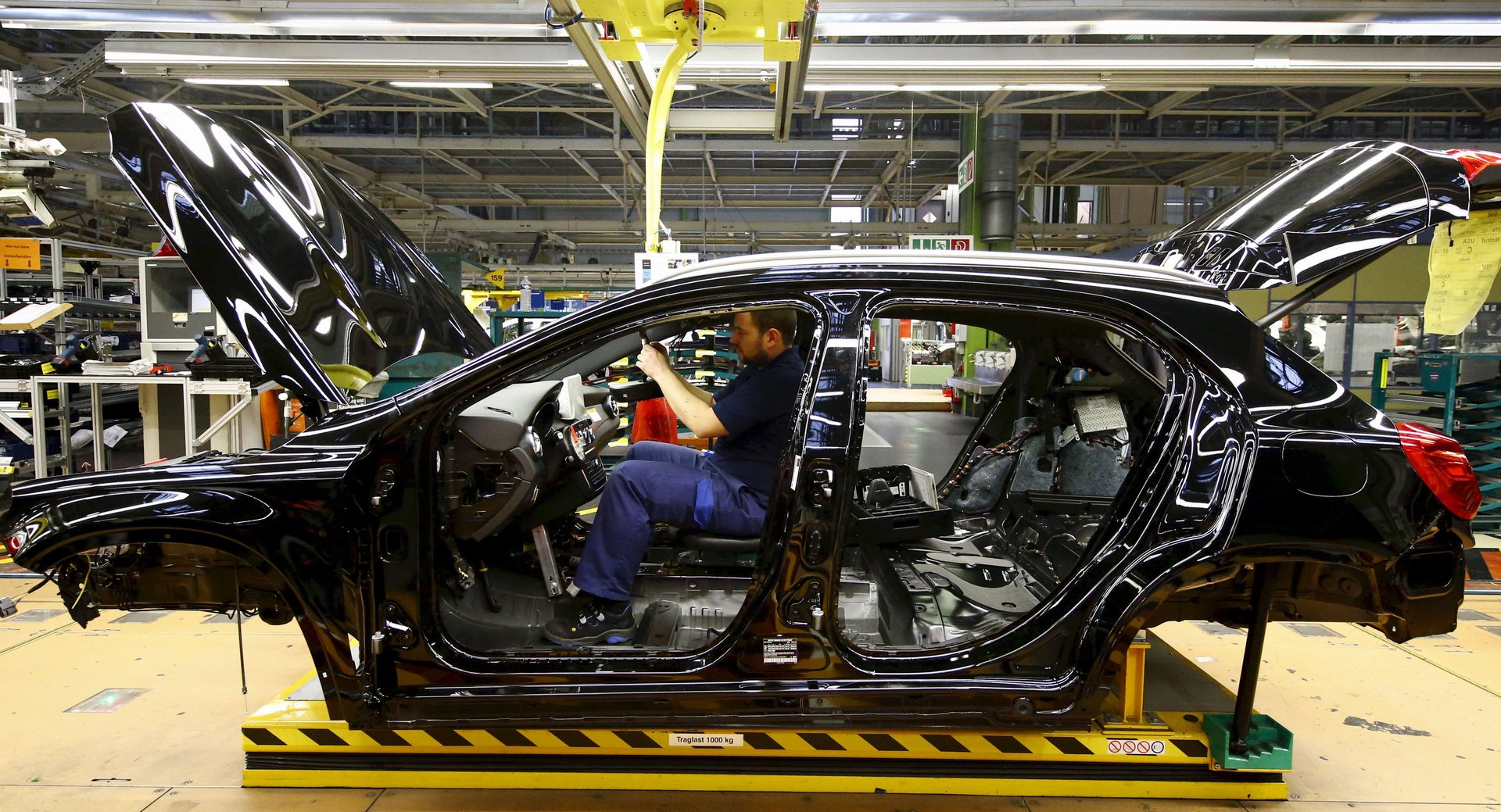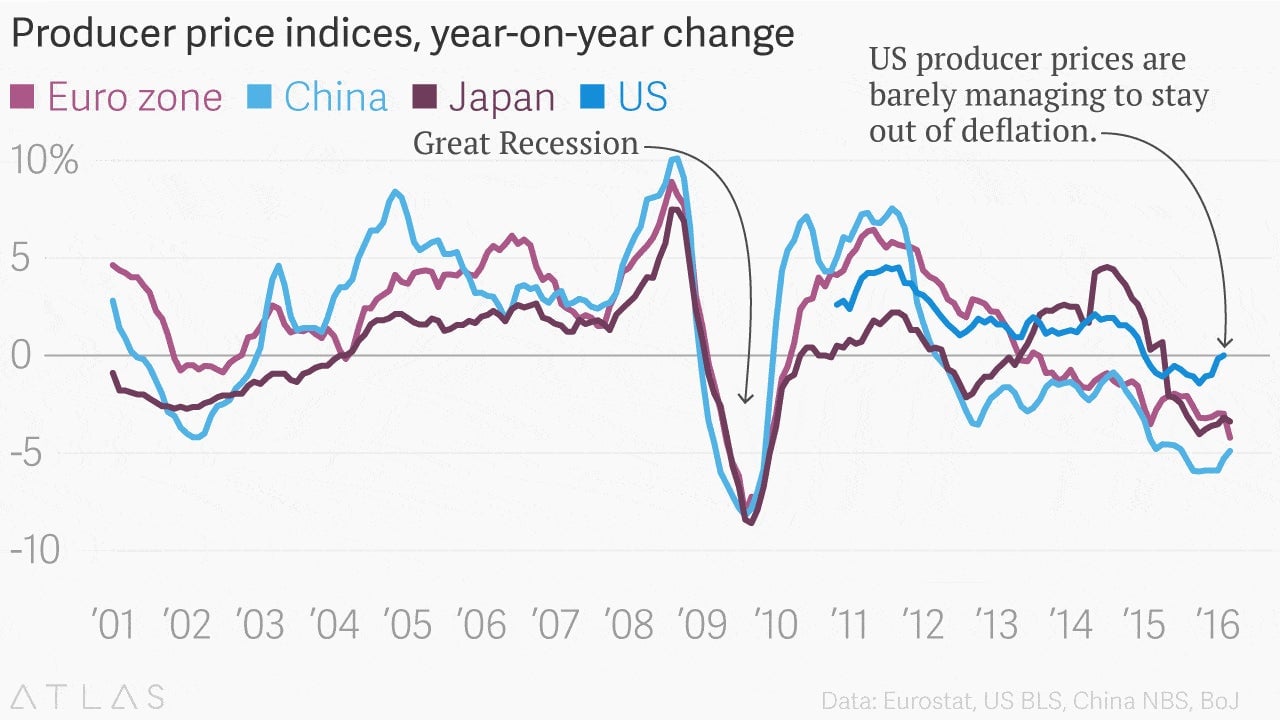An incredibly important chart that you probably won’t see anywhere else today
The European producer price index is not the prime rib of economic data. It’s more like the rump roast.


The European producer price index is not the prime rib of economic data. It’s more like the rump roast.
But even a rump roast, if prepared properly, can be a revelation.
So it is with today’s update on the price levels of goods coming out of the factory gate in the euro zone.
Those prices are plunging, dropping 0.7% between January and February. Year over year, they were down 4.2%. That kind of collapse is reminiscent of some of the worst moments of the Great Recession.

What does this mean? Essentially that there is strong downward pressure working its way through the product chain that will eventually reach Europe’s consumers, making the European Central Bank’s efforts to stave off broad-based price declines that much tougher. (The ECB has already pushed interest rates deeply into negative territory in order to get money circulating. The results have been mixed.)
In other words, falling wholesale prices are yet another sign that the main macroeconomic problem facing the world right now is the ongoing risk of very low inflation or even outright deflation. Three of the world’s four largest economic entities are either in deflation, or threatened by it. Chinese wholesale prices are in free fall, as are those in Japan, where the economy has been locked in a decades-long battle to escape deflation. Only the US seems to be hanging in there—by a thread.

This goes a long way toward explaining the US Federal Reserve’s shift away from an expected string of interest rate increases this year. The dovish turn appeared to catch markets by surprise, but it shouldn’t have. The low pressure system that’s hung over global price levels has been problematic for a while. All of this, by the way, should be a very good thing for stocks, at least in the short term, as it means that monetary policy will be easy for a good bit longer. Indeed, it’s one of the reasons US benchmark stock indexes have pulled back into positive territory for the year.